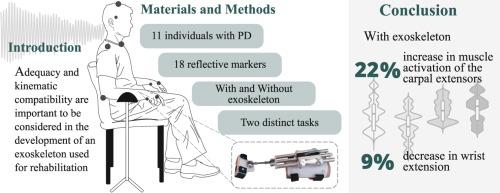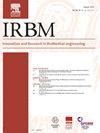Biomechanical Evaluation of an Exoskeleton for Rehabilitation of Individuals with Parkinson's Disease
Abstract
Objective: Prior to implementing any robotic device or new rehabilitation technique into clinical practice, it is essential to examine metrics that reflect the instrument's utility and range of action. For this purpose, this study assesses, based on biomechanical data, the ergonomics and action range of a wrist exoskeleton that may be implemented into clinical practice for the rehabilitation of this joint in patients with Parkinson' disease (PD). Materials and Methods: Eleven individuals with rigidity caused by PD participated in the study. Two distinct tasks were proposed: maximum voluntary contraction and sequential wrist flexion and extension; while electromyography and kinematic data were collected in two stages, with and without the exoskeleton. For statistical analysis, Bootstrap resampling, Kolmogorov-Smirnov, and paired Wilcoxon Mann tests were used. Results and Conclusion: Using the exoskeleton resulted in a 22% increase in muscle activation of the carpal extensors and a 9% decrease in wrist extension. According to the biomechanical parameters evaluated, the exoskeleton guaranteed the amplitude considered functional for the wrist joint, indicating good mechanical adequacy for use in clinical practice.


 求助内容:
求助内容: 应助结果提醒方式:
应助结果提醒方式:


